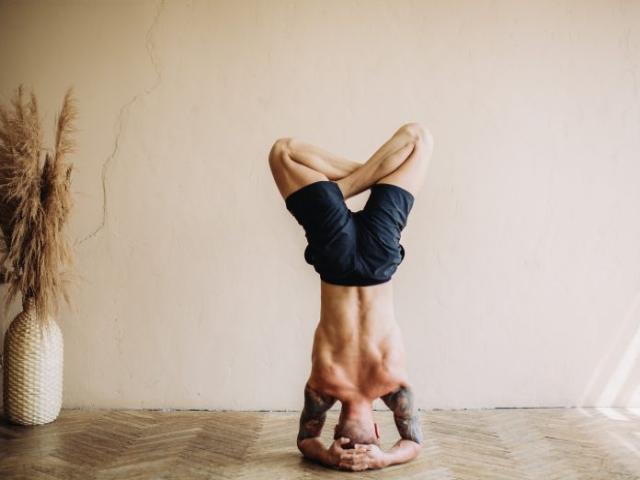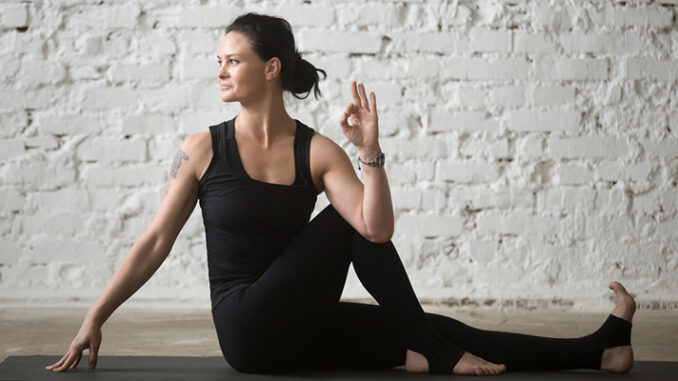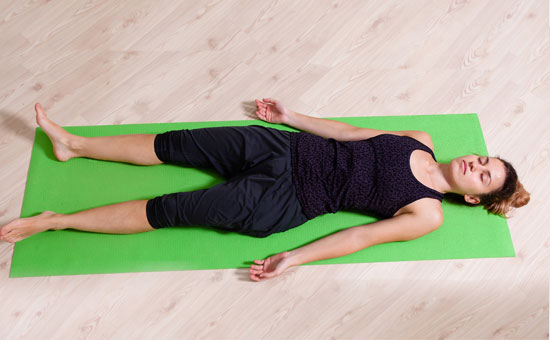How To Do A Headstand – A Step By Step Guide

Headstand is often known as the king of asanas, which is the Sanskrit word for posture. The Headstand is an innovative yoga upturning.
As because the headstand pose is turning your body upside down, you need to practice certain safety measures. It is also important to enjoy yourself. Most of the Yoga schools in Rishikesh emphasized the vital aspect of doing Headstand is to have maximum fun.
Headstand is highly recuperative to our nervous system and is grounding as per most yoga teachers. It not only involves holding things very tightly rather, but it’s also about having deep relaxation, playfulness as well as gentleness.
It does not matter whether you are have just started doing headstand posture or you are looking to achieve perfectness in your headstand posture, there are several ways in which you can enhance your current level.
Let us know about the potential benefits of doing a headstand yoga posture:
- It calms your mind
- Relieves stress as well as depression
- Activates your pituitary gland and pineal gland.
- Stimulates your lymphatic system.
- It helps in building strength in your upper body, core as well as the spine.
- Increases your lung capacity.
- Stimulation and strengthening of your abdominal organs.
- Boosts your digestive system.
- Lessens your symptoms of menopause.
- Prohibition of headache.
What are the safety measures you should take while doing a headstand?
In addition to the benefits, a headstand posture also possesses some risks like pain or injury on your back, neck, or shoulder. It would help if you executed certain safety measures to do it perfectly. This also includes having essential strength, flexibility as well as alignment.
Here are a few safety measures you should take while doing a headstand:
- Perform with a spotter: One of the best ways is to perform with a spotter. It can be either a certified yoga teacher, a fitness trainer, or a friend with the required knowledge.
- It is quite tricky to check your alignment when you are in a posture. But when you have a spotter by your side, he/she can guide you in aligning your body perfectly and supporting your body. They will offer you support while moving in or out of the posture.
- Take the support of a wall: It is perfectly ok to take support of the wall, but you should rely on it too much. Do not get used to the wall. If you feel nervous or afraid, you can use the wall to offer you the required emotional support.
- Keep some folded blankets or some cushions around you: As soon as you progress, you can start distancing yourself from the wall till you are capable of doing Headstand all by yourself. While practicing at home, you can place some folded blankets or some cushions on the ground around you. If by any chance, you flip over, you will have a soft landing.
For advanced yoga courses - 300 Hour Yoga Teacher Training in Rishikesh
Try to avoid doing headstands when you have
- Any concerns with your neck, back, or shoulders.
- Concerns of blood flowing to your head.
- Heart conditions
- Osteoporosis
- Any issues with your eyes
- Blood pressure issues.
- Pregnant women should also avoid doing yoga until and unless they are doing it under the supervision of a certified yoga teacher. You should also avoid headstands if you are menstruating. It is because it decreases the downward flow of blood in your body.
Before discussing how to do a headstand, you must know that certain yoga poses can assist you in building the strength, core stability, and alignment required for doing a headstand. Also, make sure you have a flexible body.
Some of the poses that help in doing Headstand are
- Dolphin
- Forearm plank
- Downward facing dog
- Supported shoulder stand.’
- Wide-legged forward bend
Now let us know how to do a headstand?
Before you start doing Headstand, ensure you are feeling comfortable. The most important part is you must feel relaxed while going to do it. The primary purpose of this pose is to feel relaxed and soothe your nervous system.
Here is the step by step instructions to do Headstand:
- At first, sit in a thunderbolt pose.
- Measure out the required elbow breadth by keeping your opposite hand in the upper arms inside the base.
- Now position your elbow in a position when you keep them down in the mat.
- Keep your hands together to make a triangle shape using your forearms.
- Now intertwine your fingers by opening your palms and thumbs.
- Now keep the tip of your pinky fingers all together so that your hand bottom has a stable base.
- Keep the top portion of your head on the mat.
- Now slowly uplift your hips and try to make your legs straight.
- Now try to position your feet just above your head by bringing the hips above your shoulders.
- Then slowly bring your knees towards your chest. Remain in this position for about 5 seconds.
- Now slowly straighten your legs.
Coming back from your headstand position is as important as going into and holding your posture. You should use your strength and stability to come out from the position slowly and with control.
Steps to follow while coming back from the headstand position:
- Bend your knees back slowly to bring back your ankles towards your hips.
- Now bend back your knees towards your chest.
- Remain in this position for about a few seconds.
- Slowly lower down your feet towards the floor.
- Now rest in child pose for about a few moments.
- Now relax and release your neck, back as well as shoulder tension.
- Sit down in a hero pose.
Try to avoid standing at once after doing a headstand. If you find out that some blood is flowing to your head when you stand up, slowly lower yourself back to the seated pose.
Headstand is a good addition to your regular yoga practice that offers you physical advantages and some sense of achievement. All the best yoga school in Rishikesh offers this in their beginner 200 hours yoga teacher training course in Rishikesh where they will explaining you in-depth how to perform the headstand in a yogic way with the break down of yoga anatomy and much more So this one is a good way to gain mastery in doing Headstand.
Gradually start doing Headstand by practicing the preliminary pose perfectly. Always listen to your body, and do not hesitate to take a break if you are experiencing any pain after practicing.
There are a lot of ways one can learn a headstand, that includes watching the videos from youtube and practicing by ourselves or you can do this why taking an online course by the expert and practicing watching the video.
You can learn this by joining the learn by gym class or taking a yoga course in the yoga studio and learning the art of doing the yogic headstand, which will not only improves the blood circulation of your brain but also have many health benefits.
Conclusion:
Everyone has a dream in their life to do a handstand or headstand once in their lifetime and yes this is a good and healthy goal to have in your life. In order to achieve this, we must first have hit the gym or yoga studio or prepare ourselves to do practice this every day.

Autism Will Soon Be Able To Be Detected In Toddlers Using A Smartphone
- Identifying autism in toddlers is critical to beginning interventions early, and is associated with improved outcomes later in life.

Melon Surprising Benefits And Amazing Uses For Humans
- One cup of cantaloupe chunks provides 34% of your daily value for vitamin C to support blood vessels

Learn How to Perform Vakrasana (Twisted Pose)?
- The Vajrayana term is derived from combining two words, Vakra, which means "twisted," and the asana that means "yoga posture."

Here is How Yoga Nidra Practice Benefits Mind & Body
- Yoga Nidra is known to have tremendous amounts of benefits. This form of yoga, also known as sleep yoga.